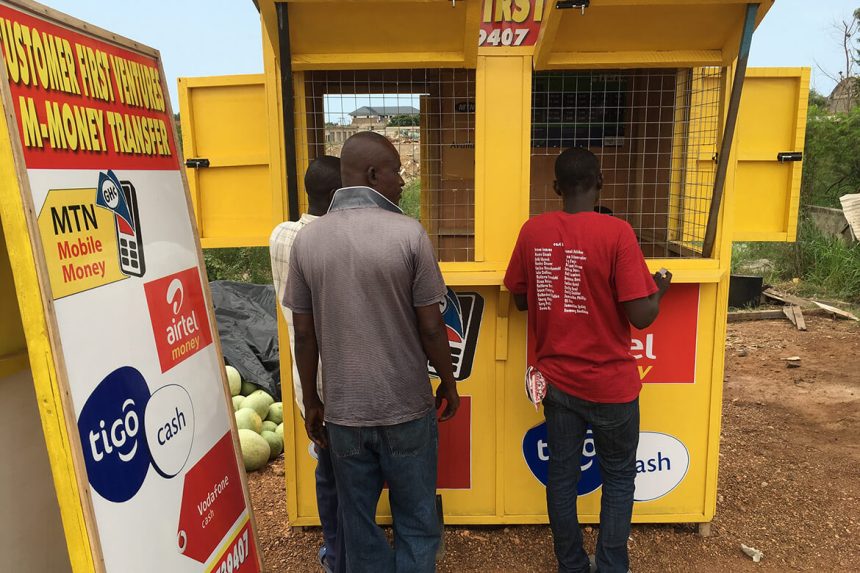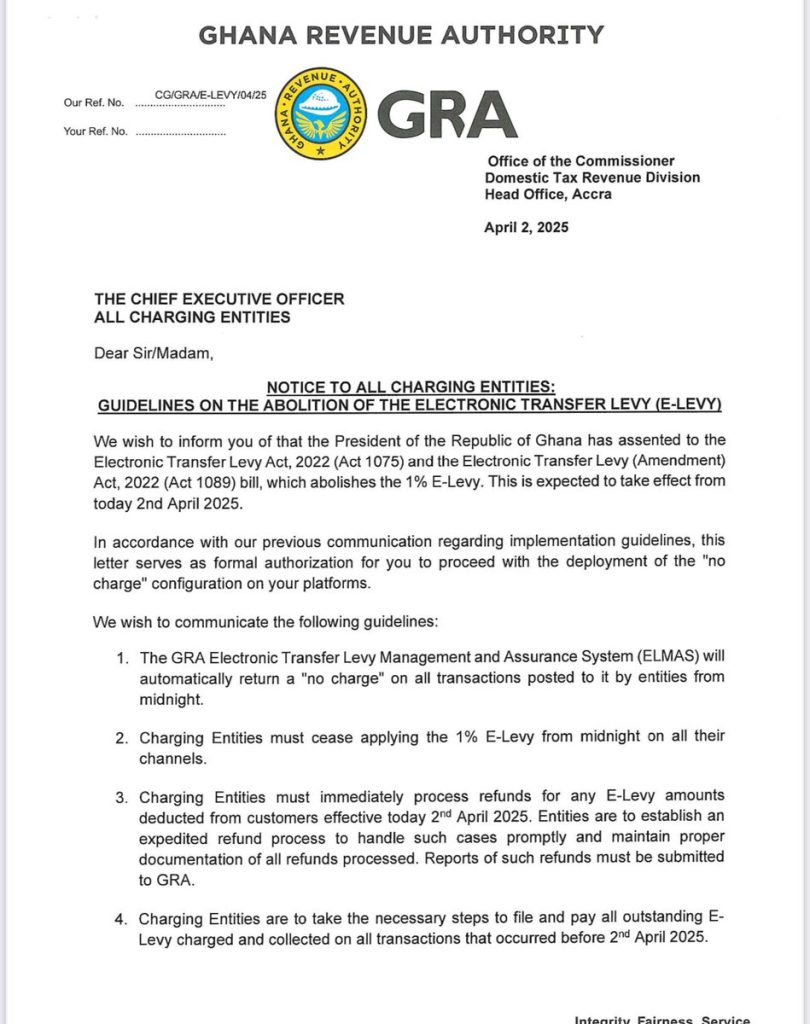
Ghana Revenue Authority Scraps Controversial 1% E-Levy
Share

The Ghana Revenue Authority (GRA) dropped a major policy shift today, announcing the abolition of the 1% Electronic Transfer Levy (E-Levy) as of April 2, 2025.
The move, formalized through the Electronic Transfer Levy Act, 2022 (Act 1075) and its 2022 amendment (Act 1089), ends a controversial tax that sparked widespread backlash since its rollout in May 2022.
Why It Matters
The E-Levy, which slapped a 1% fee on electronic transactions like mobile money payments and bank transfers, was meant to boost Ghana’s revenue amid a fiscal crunch.
But it fell flat—raising just GHS 1.2 billion in 2023 against a projected GHS 4.5 billion annually—while fueling public anger over its burden on low-income Ghanaians and digital financial growth.

What’s Happening
In a letter from the GRA’s Domestic Tax Revenue Division, charging entities (think banks, mobile money operators like MTN MoMo, and payment platforms) were given clear marching orders:
- No More Charges: The GRA’s Electronic Transfer Levy Management and Assurance System (ELMAS) will auto-set a “no charge” status on all transactions from midnight, April 2.
- Stop Deductions: Entities must immediately halt the 1% E-Levy across all channels.
- Refunds Incoming: Any E-Levy deducted from customers starting today must be refunded. Entities are to set up a fast-tracked refund process and report all refunds to the GRA.
- Clear the Books: Outstanding E-Levy charges from transactions before April 2 must be filed and paid.
The Ghana Revenue Authority (GRA) dropped a major policy shift today, announcing the abolition of the 1% Electronic Transfer Levy (E-Levy) as of April 2, 2025.
The move, formalized through the Electronic Transfer Levy Act, 2022 (Act 1075) and its 2022 amendment (Act 1089), ends a controversial tax that sparked widespread backlash since its rollout in May 2022.
Why It Matters
The E-Levy, which slapped a 1% fee on electronic transactions like mobile money payments and bank transfers, was meant to boost Ghana’s revenue amid a fiscal crunch.
But it fell flat—raising just GHS 1.2 billion in 2023 against a projected GHS 4.5 billion annually—while fueling public anger over its burden on low-income Ghanaians and digital financial growth.

What’s Happening
In a letter from the GRA’s Domestic Tax Revenue Division, charging entities (think banks, mobile money operators like MTN MoMo, and payment platforms) were given clear marching orders:
- No More Charges: The GRA’s Electronic Transfer Levy Management and Assurance System (ELMAS) will auto-set a “no charge” status on all transactions from midnight, April 2.
- Stop Deductions: Entities must immediately halt the 1% E-Levy across all channels.
- Refunds Incoming: Any E-Levy deducted from customers starting today must be refunded. Entities are to set up a fast-tracked refund process and report all refunds to the GRA.
- Clear the Books: Outstanding E-Levy charges from transactions before April 2 must be filed and paid.
What’s Next
For Ghanaians, this means cheaper electronic transactions, potentially boosting digital payment adoption. Fintech and e-commerce sectors could see a transaction surge as users return to platforms they’d shunned.
But charging entities face logistical hurdles—refunds and outstanding payments could strain smaller players, and the GRA hasn’t set a clear timeline for refund reporting.
The Big Picture
Ghana’s government now faces a revenue gap. Analysts see this as a populist move to win public favor post-election, but it raises questions about fiscal sustainability.
